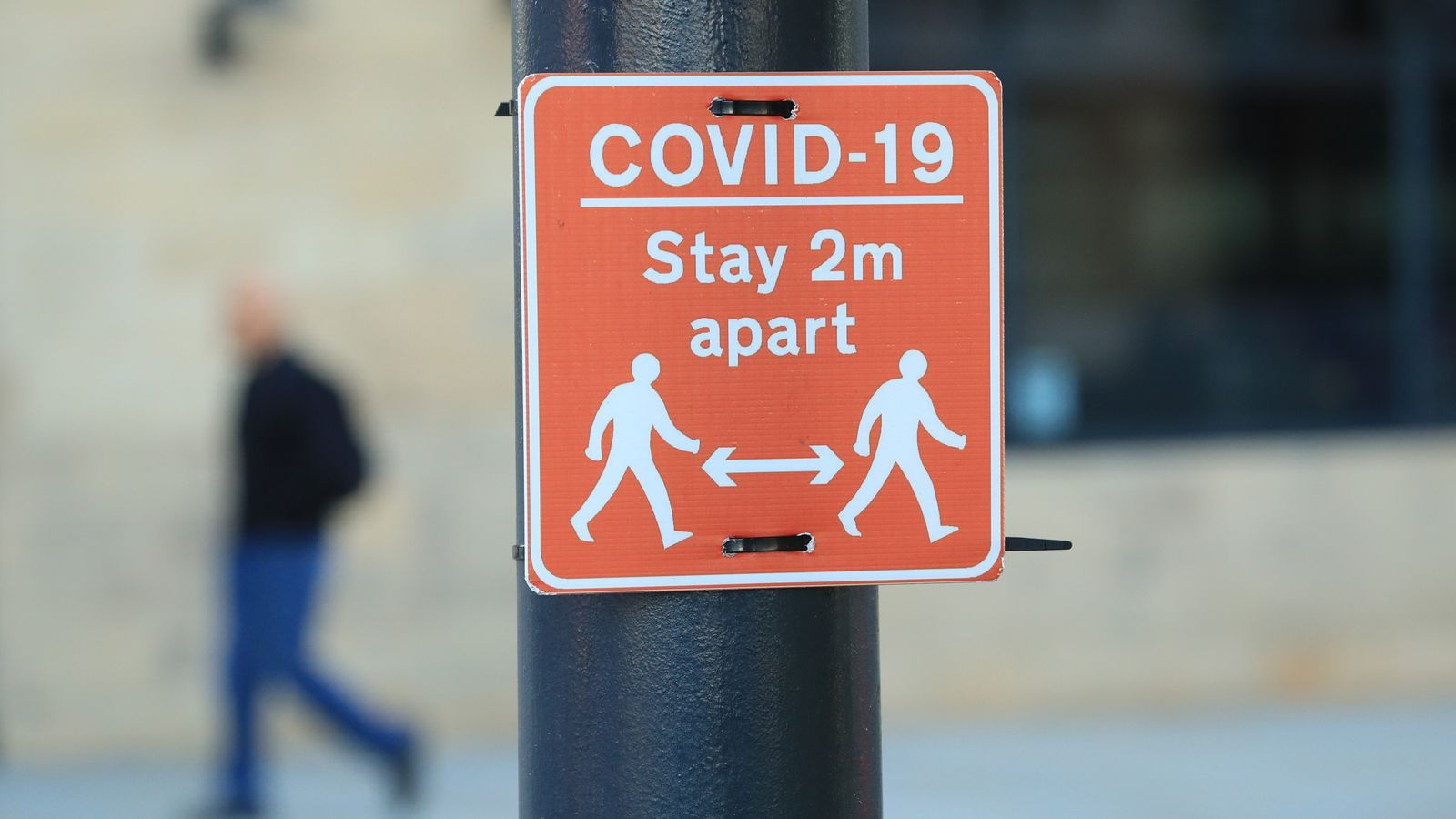The R number in the UK has risen to between 0.9 and 1.1, the government’s scientific advisory group (SAGE) says.
The R number is a measure of how many people on average each infected person transmits the virus to.
It is an increase on an estimated range of 0.8-1.0 last week, compared with 0.8-0.9 a fortnight ago.
SAGE also said the rate of coronavirus growth may still be rising.
The latest growth rate for the UK is between minus 3% and plus 1%, an increase from between minus 4% and minus 1% last week.
This indicates the number of new infections is somewhere between shrinking by 3% and growing by 1% every day.
Scientists at SAGE say the most likely value is towards the middle of the range.
Because the data used to calculate R and growth rate reflect the situation from a few weeks ago, recent changes in transmission are not yet fully reflected in the estimates
Experts also stress the figures are estimates and that there is a high degree of uncertainty around them.
It may take between two to three weeks for the changes in the spread of COVID-19 to be reflected in the estimates, due to a time delay between initial infection and the need for hospital care.
But the scientists said models that used testing data, which have less of a time delay, indicate higher values for R in England.
In England, the R is estimated to be between 0.9 and 1.0, and the growth rate is minus 3% to zero.
The R could be as high as 1.6 in Northern Ireland, where lockdown restrictions were tightened earlier this week, including limits on how many people can meet.
It could also be above 1 in Scotland, according to First Minister Nicola Sturgeon, with the country having this week posted its largest daily increase in three months.
Analysis: With R creeping up, there is very little wriggle room
By Laura Bundock, news correspondent
It seems likely that the R number is hovering around one, and so it is definitely not out of control.
Don’t forget, either, that it has its limitations when assessing trends, and is less robust in areas with low case numbers.
In smaller areas seeing spikes, a whole region could see its R value soar. But the range of R has gone up, showing we cannot afford to be complacent.
Data from the Office for National Statistics suggests the virus is levelling off, with the number of new infections stabilising.
For now, both the number of people in hospital, and the number of deaths, are falling, albeit slowly. But figures from Public Health England (PHE), highlighting local outbreaks, show there is probably a slight upward trend.
Infections are rising among the 15-44 age group, which could seep into the older population. Either way, there will be a delay before we see a rise in hospitalisations.
The PHE data shows considerable regional variation – stressing, once again, the importance of managing local outbreaks.
All in all, the picture is varied. It seems unlikely more restrictions will be lifted.
With the R creeping up, there is very little wriggle room. And that’s a worry as summer draws to a close, and we head into autumn and winter.
